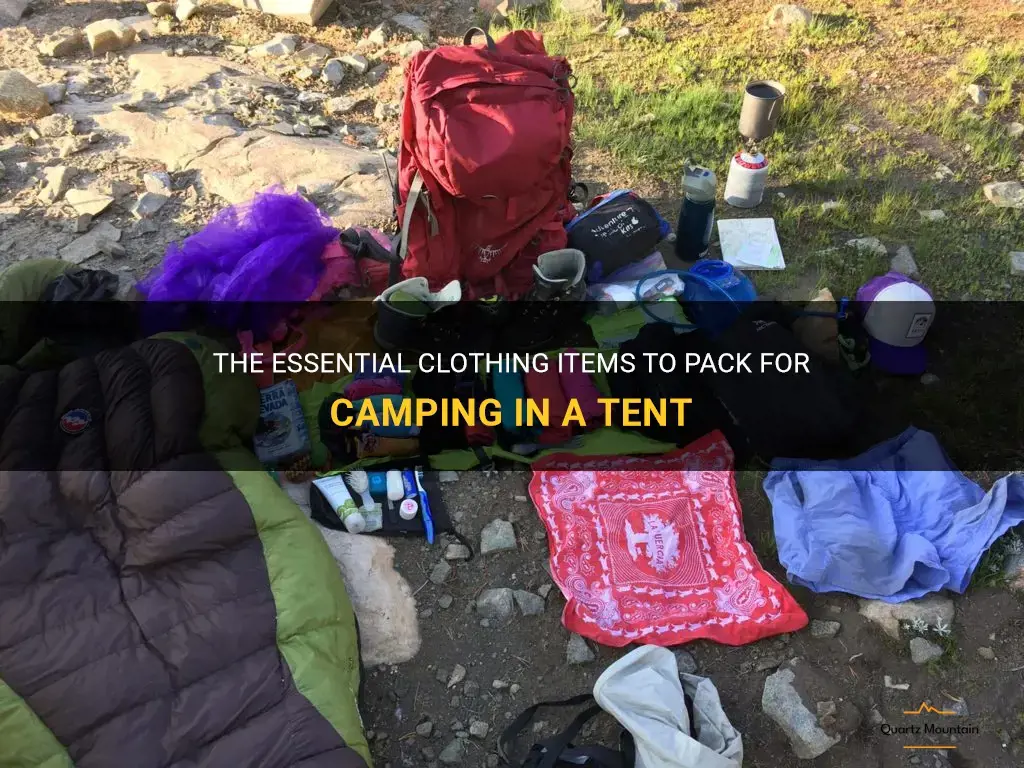
Heading off on a camping trip? Don't forget to pack the essentials! While it can be tempting to stuff your bag full of unnecessary clothing items, we're here to help you narrow it down to the must-haves. In this article, we'll explore the essential clothing items you'll need to pack for camping in a tent, ensuring you're prepared for whatever the great outdoors has in store for you. From versatile layers to durable footwear, you'll have everything you need to stay comfortable and stylish on your camping adventure. So, grab your backpack and let's get packing!
What You'll Learn
- What types of clothes should I pack for a camping trip in a tent?
- Are there any specific clothing items that are essential for camping in a tent?
- Should I prioritize packing clothes that are suitable for different weather conditions?
- Are there any specific materials or fabrics that are best for camping clothing?
- How many sets of clothes should I pack for a camping trip in a tent?

What types of clothes should I pack for a camping trip in a tent?
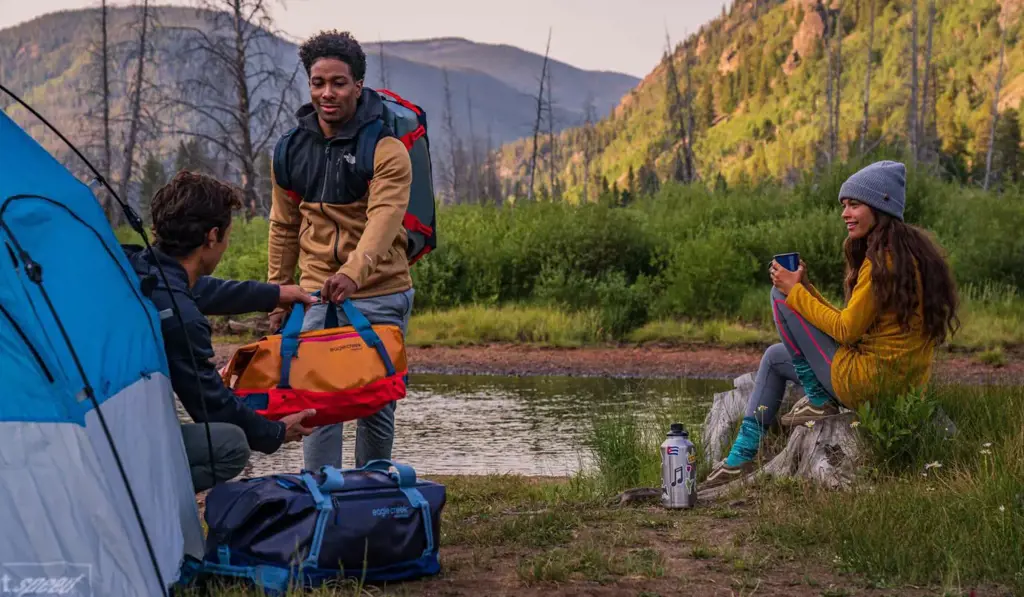
When packing for a camping trip in a tent, it is important to consider the type of clothes that are suitable for the outdoor environment and the activities you will be engaging in. Here, we will discuss the various types of clothes that you should pack to ensure comfort and protection during your camping trip.
- Layering is key: The weather can be unpredictable when you are camping, so it is essential to pack clothes that allow you to layer and adjust your attire accordingly. Start with a base layer that wicks away moisture from your body, such as synthetic or merino wool thermal underwear. This layer will help keep you warm by insulating your body heat.
- Mid-layer options: On top of your base layer, consider packing a variety of mid-layer options to provide additional warmth and insulation. Fleece jackets, sweaters, or hoodies are excellent choices for this purpose. They are lightweight, breathable, and offer excellent insulation, making them ideal for cooler temperatures.
- Outerwear for protection: Your outerwear should be chosen based on the weather conditions and the activities you have planned. For rainy or wet conditions, a waterproof jacket and pants are essential to keep you dry. Look for materials like Gore-Tex or similar waterproof and breathable fabrics. In the case of windy conditions, a windproof jacket can offer much-needed protection.
- Pants and shorts: Comfortable and durable pants are a must for camping. Opt for pants made from quick-drying and moisture-wicking materials that provide both protection and flexibility. Convertible pants are a great choice as they can be converted into shorts when necessary. Packing a few pairs of shorts is also advisable for warmer days or when you need more freedom of movement.
- Shirts and base layers: Pack a mix of short and long-sleeved shirts that are lightweight, breathable, and moisture-wicking. You can also consider packing a few thermal undershirts or base layers for extra warmth during chilly nights. Avoid cotton t-shirts as they retain moisture and can leave you feeling clammy and uncomfortable.
- Footwear: Choosing the right footwear is essential for any camping trip. Ensure you pack a sturdy pair of hiking boots or trail shoes that provide good ankle support and traction. Additionally, pack a pair of comfortable sandals or flip-flops for relaxing around the campsite or crossing water bodies. Don't forget to bring along a few pairs of moisture-wicking socks to keep your feet dry and prevent blisters.
- Accessories: When it comes to camping, accessories can make a big difference. Don't forget to pack a wide-brimmed hat or a cap to protect your face and eyes from the sun. Sunglasses with UV protection are also essential. Gloves or mittens can provide warmth during colder nights, and a lightweight, packable rain poncho is a handy addition to protect you from unexpected rain showers.
Remember to consider the duration of your camping trip and the expected weather conditions when selecting clothing items to pack. It is always better to be prepared for different scenarios by packing a variety of clothing options that can be layered for comfort and protection. Choosing the right clothes can ensure that you enjoy your camping trip to the fullest, regardless of the weather.
Essential Items to Pack for an Unforgettable Adventure at Smugglers Notch
You may want to see also

Are there any specific clothing items that are essential for camping in a tent?
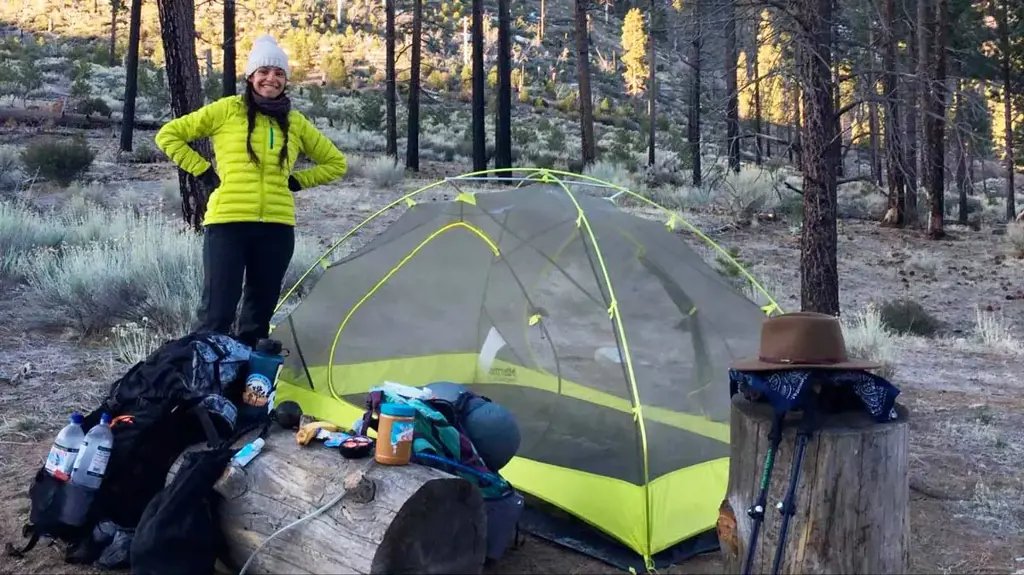
When camping in a tent, it is important to pack the right clothing items to ensure comfort and protection from the elements. While the specific clothing essentials may vary depending on the location and weather conditions, there are some general items that are recommended for a successful camping trip.
First and foremost, it is important to bring appropriate layers for varying temperatures. It is common for temperatures to drop significantly during the night, so having warm layers is essential. A good base layer made of moisture-wicking materials such as merino wool or synthetic fibers helps to regulate body temperature and keep the skin dry. Additionally, a mid-layer such as a fleece or down jacket provides insulation and warmth. Finally, having a good quality waterproof and windproof outer layer is crucial for protecting against rain, wind, and other harsh weather conditions.
In addition to layering, it is essential to bring proper footwear for camping. A sturdy pair of hiking boots or shoes with good traction and ankle support is recommended. These will provide stability and protection during hikes and keep your feet dry and comfortable. It is also a good idea to bring extra socks made of wool or synthetic materials that wick away moisture to prevent blisters and keep your feet warm.
When it comes to camping, it is also important to pack appropriate headwear. A hat with a brim can protect you from the sun during the day, while a beanie or a warm hat can keep you warm during colder weather. Additionally, bringing a lightweight, breathable and moisture-wicking bandana or scarf can be useful for various purposes such as protecting your neck from the sun or using it as a face covering.
Furthermore, it is important to bring the right type of camping-specific clothing items. Long pants made of lightweight and quick-drying materials are ideal as they provide protection against insects, thorny bushes, and rough terrain. T-shirts and long-sleeved shirts made of moisture-wicking materials can help keep you cool and dry during hikes. Additionally, it is advisable to bring a bathing suit if there are any nearby swimming opportunities such as lakes or rivers.
Lastly, it is important to pack the right accessories to enhance your camping experience. A good pair of sunglasses can protect your eyes from harmful UV rays and glare. Insect repellent clothing or bug spray can help keep mosquitoes and other insects at bay. A lightweight, quick-drying towel is essential for personal hygiene and convenience. Finally, having a waterproof duffel bag or dry bags can keep your clothes dry and protected in case of unexpected rainfall.
In conclusion, there are several clothing items that are essential for camping in a tent. These include appropriate layers for varying temperatures, proper footwear, headwear for sun protection or warmth, camping-specific clothing items, and accessories. By packing these essentials, you can ensure comfort, protection, and an enjoyable camping experience.
Essential Items to Pack First When Moving Your Bedroom
You may want to see also

Should I prioritize packing clothes that are suitable for different weather conditions?
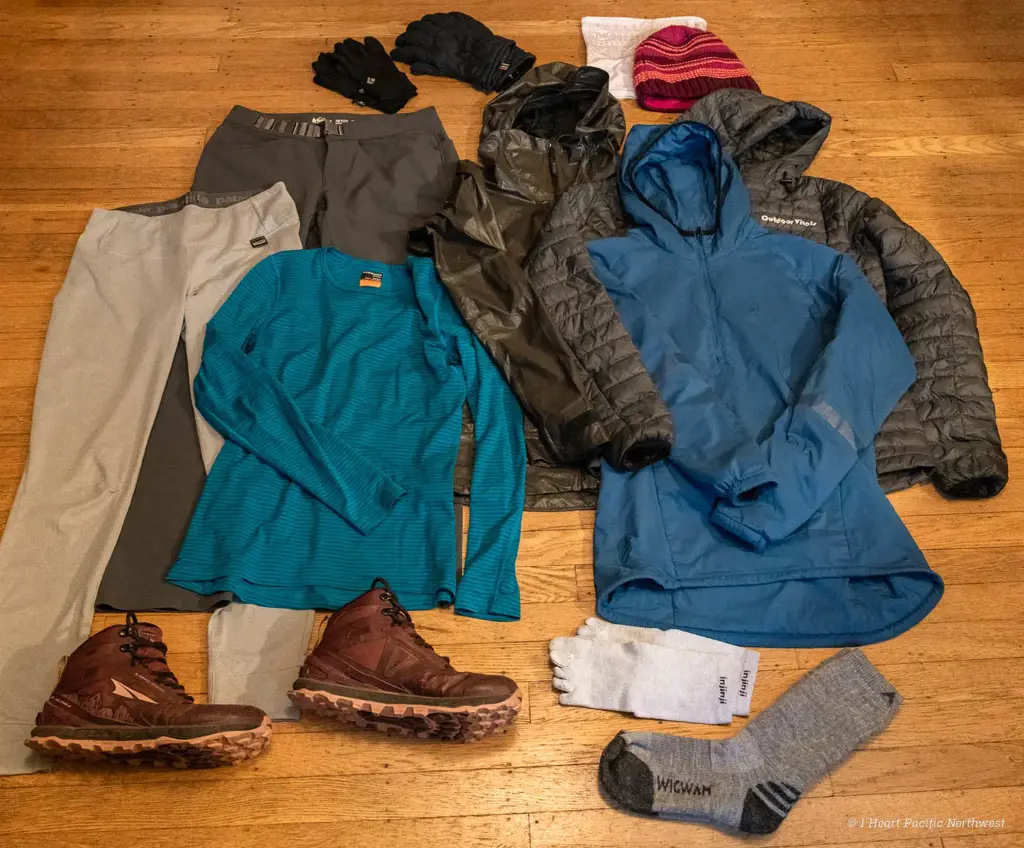
When it comes to packing for a trip, one of the most important considerations is ensuring that you have the right clothes for the weather conditions you will encounter. This is especially true if you are traveling to a destination with variable or unpredictable weather. But should you prioritize packing clothes that are suitable for different weather conditions? The answer is yes, and here's why.
- Scientific evidence: Weather patterns can vary greatly from one location to another, and even within the same region. By packing clothes that are suitable for different weather conditions, you can be prepared for sudden changes in temperature, precipitation, or wind speed. For example, if you are visiting a coastal area, you may experience a cool ocean breeze during the day and a drop in temperature at night. Packing layers of clothing, such as a lightweight jacket, a sweater, and a t-shirt, will allow you to adjust to these different conditions easily.
- Personal experience: Many travelers have experienced the frustration of arriving at their destination only to realize that they don't have the appropriate clothing for the weather. This can lead to discomfort, inconvenience, and even health issues. By prioritizing the packing of clothes suitable for different weather conditions, you can avoid these problems and enjoy your trip to the fullest. You'll have peace of mind knowing that you are prepared for any weather scenario that may arise.
- Step-by-step approach: To effectively pack for different weather conditions, start by researching the typical weather patterns and climate of your destination during the time of your visit. Look for information on average temperatures, rainfall, wind speed, and any other relevant data. Based on this information, create a packing list that includes items suitable for different weather scenarios, such as lightweight clothing for hot weather, layers for cool weather, and waterproof gear for rainy conditions.
- Examples: Let's say you are planning a trip to Europe in the spring. You know that the weather can be quite unpredictable during this time, with a mix of sunny days, rain showers, and cool temperatures. To prioritize packing clothes suitable for different weather conditions, you might include items like light t-shirts, a rain jacket, a sweater, and a pair of comfortable walking shoes. This way, you'll be prepared for warm days, sudden rainstorms, and cool evenings.
In conclusion, prioritizing packing clothes that are suitable for different weather conditions is a smart choice when traveling. By doing so, you can adapt to changing weather patterns, avoid discomfort, and fully enjoy your trip. Remember to base your clothing selection on scientific evidence and personal experience, and use a step-by-step approach to create a well-rounded packing list. With the right clothes in your luggage, you'll be ready for whatever nature has in store for you.
Essential Items Every New Mother Should Pack for the Hospital
You may want to see also

Are there any specific materials or fabrics that are best for camping clothing?
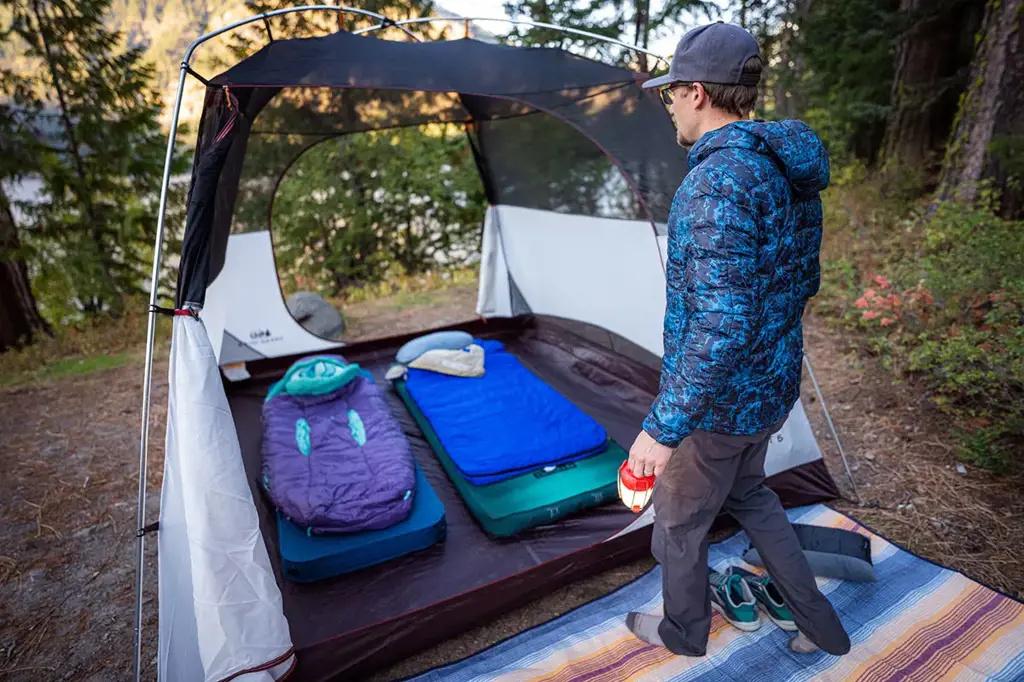
When it comes to camping clothing, it's important to consider the materials and fabrics that will be best suited for outdoor activities. The right clothing can make a significant difference in your comfort and overall experience while camping. Here are some key factors to consider when choosing camping clothing materials:
- Breathability: One of the most important characteristics of camping clothing is breathability. When you're active outdoors, it's natural to sweat, and wearing clothing made from breathable materials helps to wick moisture away from your skin and keep you dry. Fabrics like merino wool, bamboo, and synthetic blends like polyester and nylon are known for their breathability and moisture-wicking properties.
- Insulation: Depending on the weather you'll be camping in, insulation may be important to keep you warm. Insulating materials like fleece, down, and synthetic insulations such as Thinsulate can provide warmth by trapping your body heat. These materials are lightweight and can provide excellent insulation even in wet or damp conditions.
- Durability: Camping can be rough on your clothing, with activities like hiking, climbing, or setting up campsites. Look for materials that are known for their durability, like nylon or polyester blends. These fabrics are resistant to abrasion and can withstand rough use without tearing or wearing out quickly. Reinforced stitching and double-layered fabric in high-stress areas can also increase the overall durability of camping clothing.
- Fast-drying: If you're going to be camping in wet or humid conditions, it's important to have clothing that dries quickly. This helps to prevent discomfort and potential health issues caused by wearing wet clothing for an extended period. Synthetic materials like polyester and nylon are known for their quick-drying properties and are ideal for camping.
- UV Protection: Spending time outdoors exposes you to harmful ultraviolet (UV) rays from the sun. To protect your skin from sunburn and reduce the risk of skin cancer, it's essential to wear clothing that offers UV protection. Look for fabrics that have a UPF (Ultraviolet Protection Factor) rating, which indicates the amount of UV radiation the fabric blocks. Fabrics like nylon, polyester, and certain natural materials like hemp or bamboo can offer excellent UV protection.
- Lightweight and Packable: When camping, it's important to pack efficiently and keep your gear as lightweight as possible. Opt for lightweight materials that don't add unnecessary weight to your backpack. Fabrics like nylon or polyester blends are lightweight and can be compacted easily, making them ideal for camping clothing.
Examples of camping clothing materials that excel in multiple categories are merino wool and synthetic blends. Merino wool is a natural fiber that offers excellent breathability, moisture-wicking, and insulation properties. It also has natural UV protection and odor resistance. Synthetic blends like polyester and nylon offer durability, breathability, quick-drying, and UV protection. The choice between natural and synthetic materials ultimately depends on personal preferences and specific camping conditions.
In conclusion, when choosing camping clothing materials, consider breathability, insulation, durability, fast-drying capabilities, UV protection, and lightweight properties. Materials like merino wool, synthetic blends, fleece, and breathable synthetics are often preferred for camping clothing due to their ability to meet these criteria. By investing in quality camping clothing made from these materials, you can ensure a comfortable and enjoyable camping experience.
What to Pack for Europe in April: Essential Tips and Recommendations
You may want to see also

How many sets of clothes should I pack for a camping trip in a tent?
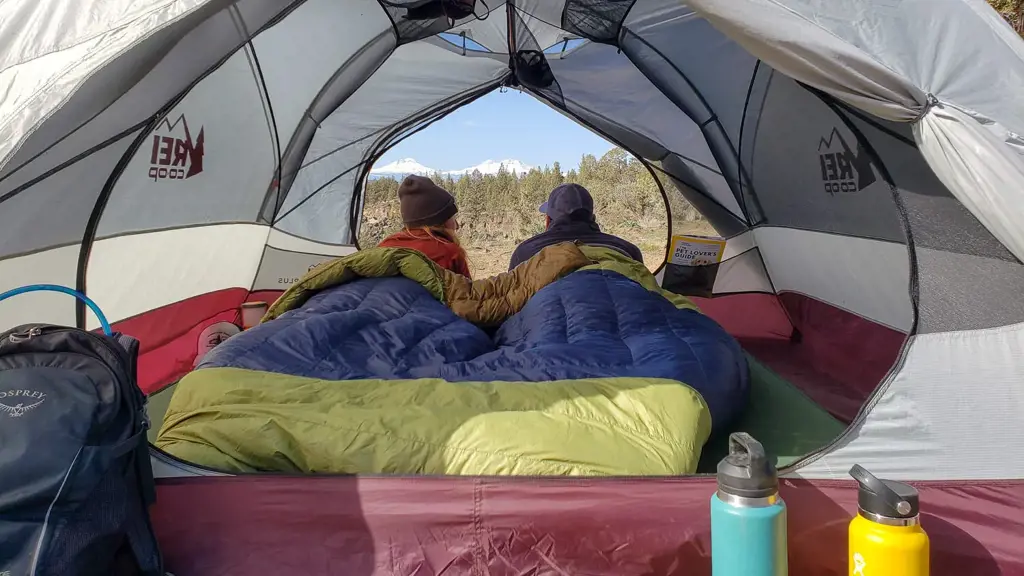
When planning a camping trip in a tent, it's important to pack the right amount of clothing to ensure comfort and practicality throughout your stay. While the exact number of clothing sets can vary depending on the length of your trip and individual preferences, there are a few key factors to consider when deciding how much clothing to pack.
Duration of the trip:
The length of your camping trip is a crucial factor in determining how many sets of clothes you should pack. A weekend getaway will require fewer clothing sets compared to a week-long camping excursion. For shorter trips, consider packing one set of clothes per day, allowing for a backup set in case of emergencies or unforeseen circumstances.
Weather conditions:
The weather at your camping destination is another important consideration. If you're heading to a location with unpredictable or particularly volatile weather, such as mountains or coastal areas, pack extra layers and clothing sets to accommodate temperature fluctuations. It's also a good idea to pack specialized outdoor clothing, like waterproof jackets or quick-drying pants, if you anticipate rain or water-based activities.
Activities planned:
Consider the activities you have planned during your camping trip. If your itinerary includes hiking, backpacking, or other physically demanding activities, you may want to pack more sets of moisture-wicking or quick-drying clothing to stay comfortable and prevent chafing. Additionally, if you plan to engage in activities like swimming or fishing, pack appropriate swimwear or water-friendly clothing.
Laundry facilities or access:
If your camping site offers laundry facilities or there are nearby laundry services, you can pack fewer sets of clothes and plan to do laundry during your trip. This allows you to pack light while ensuring clean clothes throughout your stay. However, if laundry facilities are not available or you prefer not to rely on them, consider packing extra sets to last the duration of your trip.
Layering and versatility:
When packing for a camping trip, it's crucial to prioritize layering and versatility. Instead of packing bulky items, opt for lightweight and versatile clothing that can be layered to accommodate different weather conditions. This approach allows you to mix and match a smaller number of clothing sets while still being prepared for various situations.
To better understand how many clothing sets you might need, let's consider an example. Imagine you're planning a week-long camping trip in the mountains during summer. The weather is expected to be warm during the day and chilly at night. You plan to engage in hiking and fishing activities and your camping site doesn't offer laundry facilities.
In this case, packing 4-5 sets of clothing should be sufficient. You can pack a combination of lightweight breathable t-shirts, long-sleeve shirts or hoodies, quick-drying shorts or pants, and a set of warm sleepwear. Layering options like a lightweight rain jacket or windbreaker can also come in handy for unexpected weather changes.
By considering these factors and personalizing your packing list accordingly, you can ensure that you have an appropriate number of clothing sets for your camping trip. Remember, it's always better to have a backup set than to find yourself without clean clothes in the wilderness. Happy camping!
Simple and Delicious Lunch Ideas for Preschoolers: What to Pack
You may want to see also
Frequently asked questions
When packing clothes for camping in a tent, it's important to consider the weather and temperature of your camping location. In general, you should pack comfortable and durable clothing that can withstand outdoor activities. This includes items such as hiking pants or shorts, moisture-wicking t-shirts, long-sleeved shirts, a warm fleece or jacket for cooler temperatures, and a waterproof rain jacket or poncho in case of rain. Don't forget to pack extra socks and underwear as well.
Yes, it's always a good idea to pack multiple layers of clothes for camping in a tent. Layering is essential for regulating your body temperature. By wearing multiple layers, you can easily adjust your clothing to accommodate changes in weather and activity level. Start with a moisture-wicking base layer to keep you dry, add insulating layers for warmth, and top it off with a waterproof outer layer to protect you from rain or wind.
Choosing the right footwear is crucial for a comfortable camping trip. Opt for sturdy and supportive hiking boots or shoes that are suitable for the terrain you will be camping in. Make sure your footwear is properly broken in to avoid blisters or discomfort. It's also a good idea to pack a pair of sandals or camp shoes for relaxing around the campsite. Don't forget to bring extra pairs of socks to keep your feet dry and comfortable throughout your camping trip.
If you plan on participating in hiking or outdoor activities during your camping trip, it's recommended to pack specialized clothing for these activities. Look for moisture-wicking and quick-drying fabrics that will keep you dry and comfortable. Convertible pants that can be turned into shorts are also a great option for versatility on the trail. Don't forget to pack a hat, sunglasses, and sunscreen to protect yourself from the sun's rays.
When it comes to choosing sleepwear for camping in a tent, comfort is key. Opt for loose-fitting and breathable pajamas made from lightweight fabrics such as cotton or linen. Depending on the temperature, you may want to pack an extra layer such as a sweatshirt or thermal top and bottom to keep you warm at night. Additionally, don't forget to pack a warm pair of socks to keep your feet cozy while sleeping.







